Using e-books in content strategy is nothing new. For years, digital marketing has been using this type of rich material to educate and demonstrate value within Inbound Marketing strategies. Right here, on our Rock Content blog, you will find dozens of posts recommending the use of this resource in your marketing strategy.
However, with increasingly demanding readers, the traditional PDF is no longer as attractive as it once was. By using only static PDFs, without interaction or personalization, you are at risk of losing your readers’ interest and having your content’s performance fall short of what you were expecting.
So, how do you transform static content into something that engages your audience? We present to you interactive e-books.
In this article, I will show you how to use interactive e-books in your content strategy and all the possibilities they offer. Let’s go!
What Is Interactive Content?
Before we specifically address interactive e-books, I believe it is important to take a step back and understand the concept of interactive content. Scott Brinker, head of MarTech Blog and founder of Ion, Rock Content’s interactive content platform, offers a really straightforward definition:
“Interactive content is the one in which the audience actively participates, rather than just passively reading, watching or listening. Examples of interactive content include quizzes, assessment tools, and calculators.”
Some market data highlight the power of interactive content:
- Interactive pages receive three times more likes and shares. (Source: Hubspot)
- Interactive experiences convert two times more likes and shares. (Source: Demand Metric)
- Eighty-four percent of customers expect brands to produce content that entertains, provides solutions and produces experiences. (Source: Meaningful Brands Report)
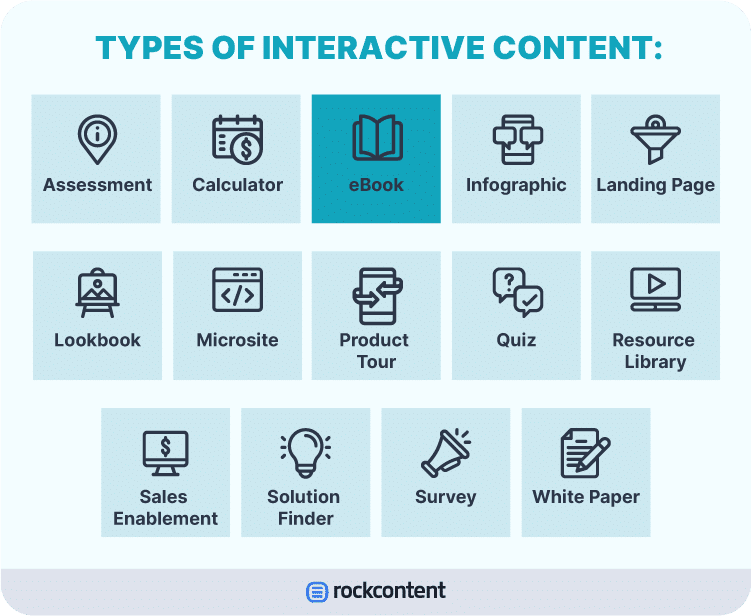
Using Interactive Content in Practice
Based on that definition by Scott Brinker and what I learned here at Rock Content, I realize that interactive content is content that allows a conversation with the audience while collecting data through this interaction without necessarily being stuck to the traditional forms.
It’s an opportunity to go beyond the traditional format to obtain data that helps with marketing strategies and sales connections.
You’re probably asking yourself: “Okay, but what do you mean by having a conversation?”. Imagine a dialogue in which I, with my strategy laid out, seek to discover information such as:
- Who are you?
- What are you trying to solve?
- Why do you need to meet this demand?
- Where are you on your buying journey?
- How can Rock Content help you?
To discover these answers, I can, for example, create a quiz that helps me determine the maturity of your content strategy. The data generated in this quiz will be important not only for the result itself but also for my marketing strategy, as it allows me to identify what other content I can recommend to help you on your inbound journey.
On the other hand, Sales will be able to get to know this lead better before approaching them since all relevant data will be made available in the CRM.
Interactive E-Books
Interactive e-books transform the static content of a PDF into something more engaging and fun. They not only deliver the content but also encourage interaction with the material, which makes people better absorb the information you want to convey.
A very effective strategy for increasing conversion with interactive e-books is to make some chapters available with no strings attached, then lock the others behind a form. This way, people can realize the value of your content by reading what’s unblocked and become curious about the blocked content, becoming more likely to give you information about themselves.
Different Types of Interactive Elements for E-Books
Click to Expand
Often used to show user profiles or resources on a topic. These elements are usually in lightboxes.

Sliders or Flows
They are used to showcase testimonials or to condense heavy text into something more digestible.

Tabbed or Collapsible (Accordion) Content
A great tool for splitting dense content and helping identify which information catches the user’s attention the most.
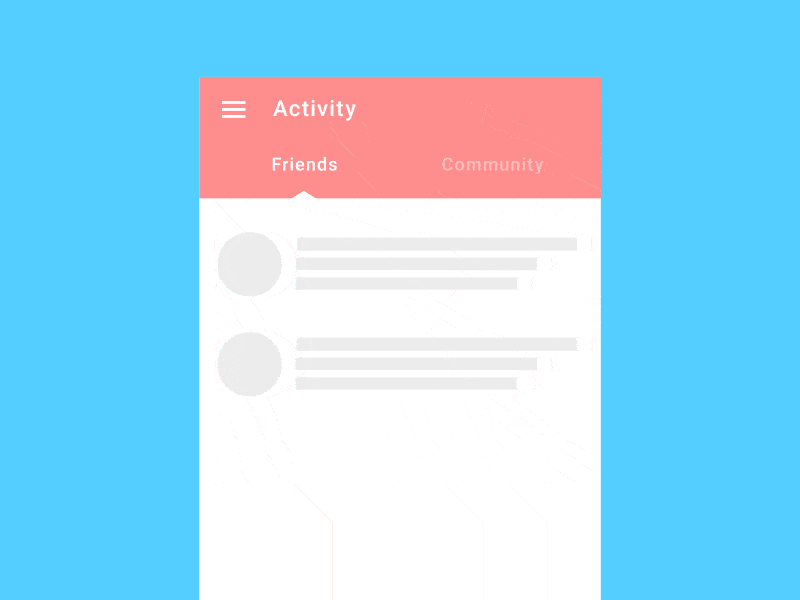
Engagement Questions
Used to collect information about your audience or to help them find the right product or service to solve their needs.
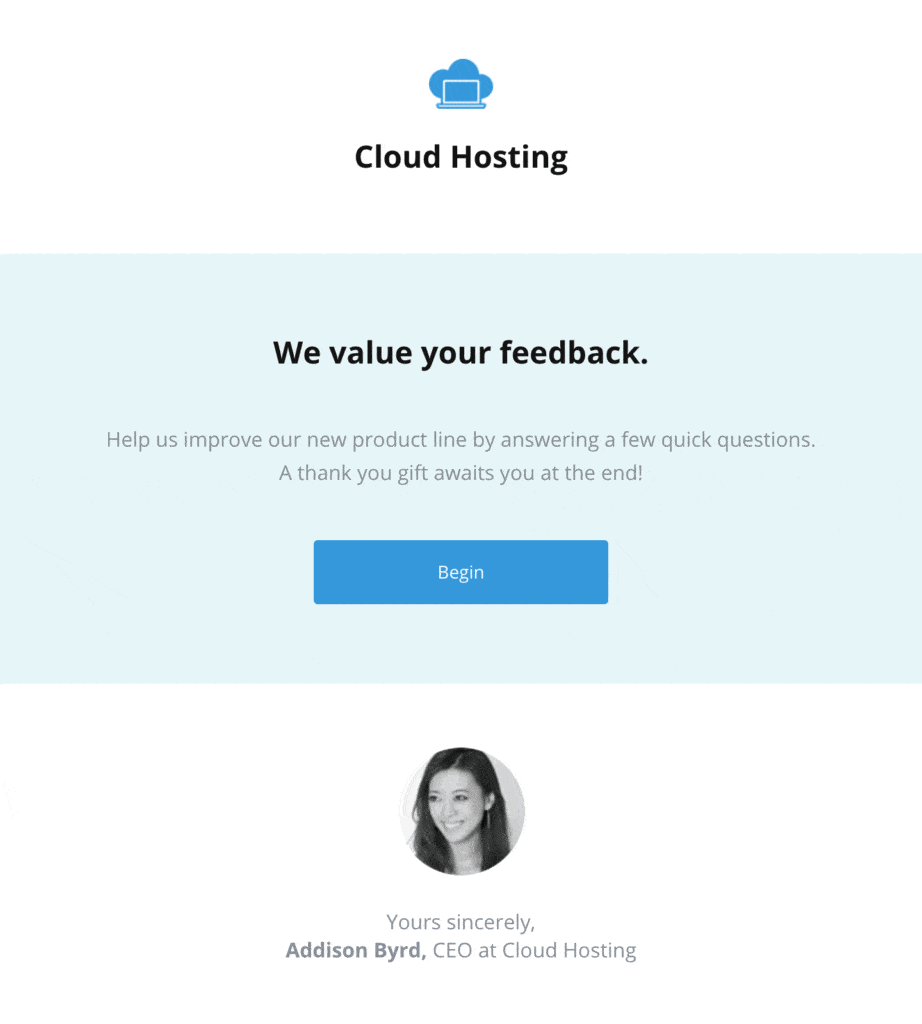
The Benefits of Interactive E-Books
Now that you understand the infinite possibilities of an interactive e-book, I want to explain some benefits of this type of experience that a static PDF simply can’t deliver with the same efficiency.
Brand Awareness
An interactive version of an e-book is an excellent opportunity to create a “wow moment” and remind readers of your brand. An ideal feeling to encourage sharing the content.
In the e-book “The Impact of Artificial Intelligence on Content Marketing,” we took the opportunity to discuss a trending topic, educate our audience, and encourage the sharing of the material.
Education
E-books are an effective tool for generating qualified leads and providing valuable information to the target audience. It can be used to increase brand authority by demonstrating your knowledge and expertise on a given subject. In the “Complete Guide to Interactive Content Across the Buying Journey,” readers learn about the importance of a well-structured buying journey and are introduced to the types of interactive content that they can use.
Engagement
Interactive e-books encourage readers to interact with elements on the page. More time on the page equals more exposure to the content presented to them.
In the “Complete Guide to Interactive Content,” we use various animation and interactivity resources to capture readers’ attention.
Customized content
Customization is becoming increasingly important for marketers.
“It can reduce acquisition costs by up to 50%, increase revenue by 5–15%, and increase marketing spend efficiency by 10–30%.” — McKinsey
Telerik, a global software development company, leveraged Ion’s logic capabilities to deliver content to its different personas. The e-book is customized to the user’s position and goals, with a qualifying question asked at the beginning.
Lead generation
Gated e-books are an excellent way to capture information about your readers, initially sparking their interest in your content. In a co-marketing partnership with Magalu, we created the “Guide: How to Use Social Networks to Boost Sales.” This interactive e-book was developed from an existing PDF, and of the five chapters, we chose to leave only the first unlocked, aiming to encourage content conversion.
Hand raised
After finishing reading an e-book, the lead may be ready to take the next step in the purchasing process. Therefore, adding some kind of form at the end can be a great opportunity to make them raise a hand and ask for more of what you have to offer.

Analysis
Interactive e-books can collect valuable data from their readers to help you with company goals and future insights. Regardless of the goal, attribution model, and KPIs (key performance indicators), the interactive e-book provides enough information to understand its impact on the customers’ journey.
Here at Rock Content, after the launch of interactive pieces, we analyze the engagement and understand how our audience is behaving in order to think about constant improvements.
Best practices for your interactive E-Book
Finally, if you’re considering testing interactive e-books in your strategy, we have some tips to ensure you tap their full potential.
Leverage Static Content
To build an interactive e-book, you don’t need to start from scratch. Start by transforming existing static e-books into interactive formats, incorporating elements such as quizzes, videos, and links. This not only revitalizes old content but also gives you a new way to engage your audience.
If you have a tool like Ion, which offers a variety of templates, this process will be much easier and faster.
Test and Test
Unfortunately, there is no foolproof formula for success. What works in Rock Content’s interactive e-book strategy may not work with your audience. What we focus on is to guide and offer tips on how we do it, but it is essential that you always carry out tests to understand what works best with your persona.
With Ion, you can duplicate an entire experience with just one click, make adjustments to your e-book’s layout, colors, or navigation to meet your test needs, and the platform will take care of running it for you.
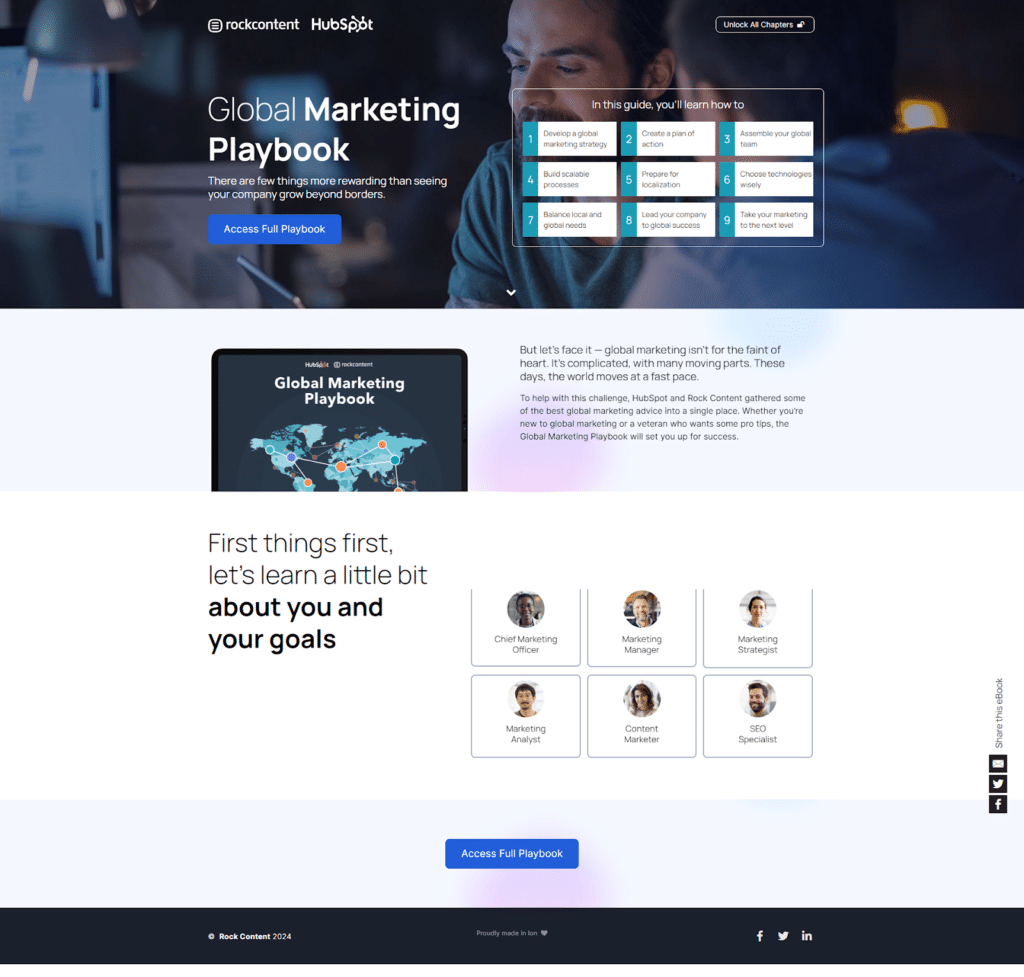
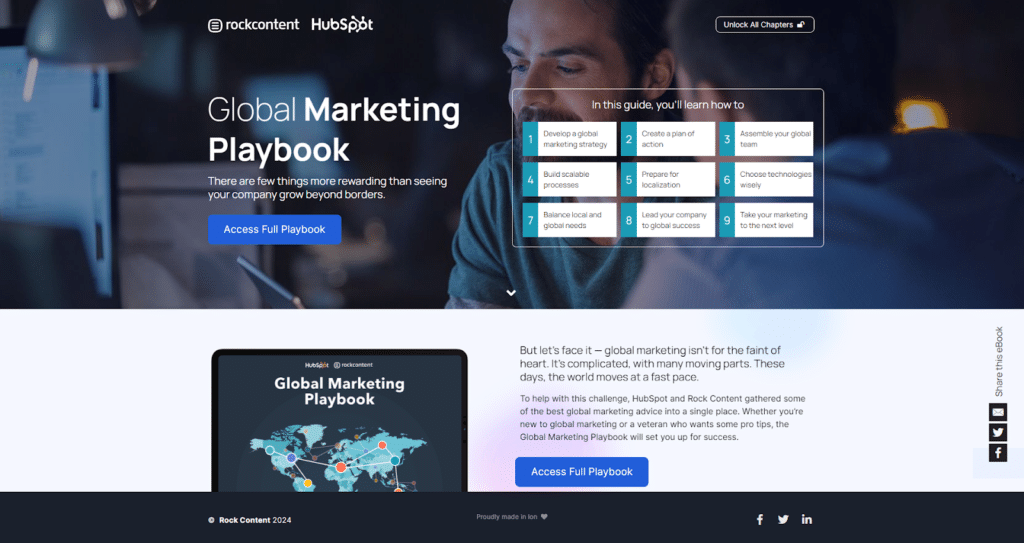
Set a Goal for Your Content
When building an interactive e-book, define a clear objective for this material – to engage the sales team, to encourage the download of static material, or to promote sharing on social networks – and include CTAs (call-to-action) throughout the interactive content. Don’t just wait for the concluding chapter of the e-book to mention your product or solution.
If you’re using a tool like Ion, you can easily add custom tags to each CTA to find out which CTA from which chapter performs the best.
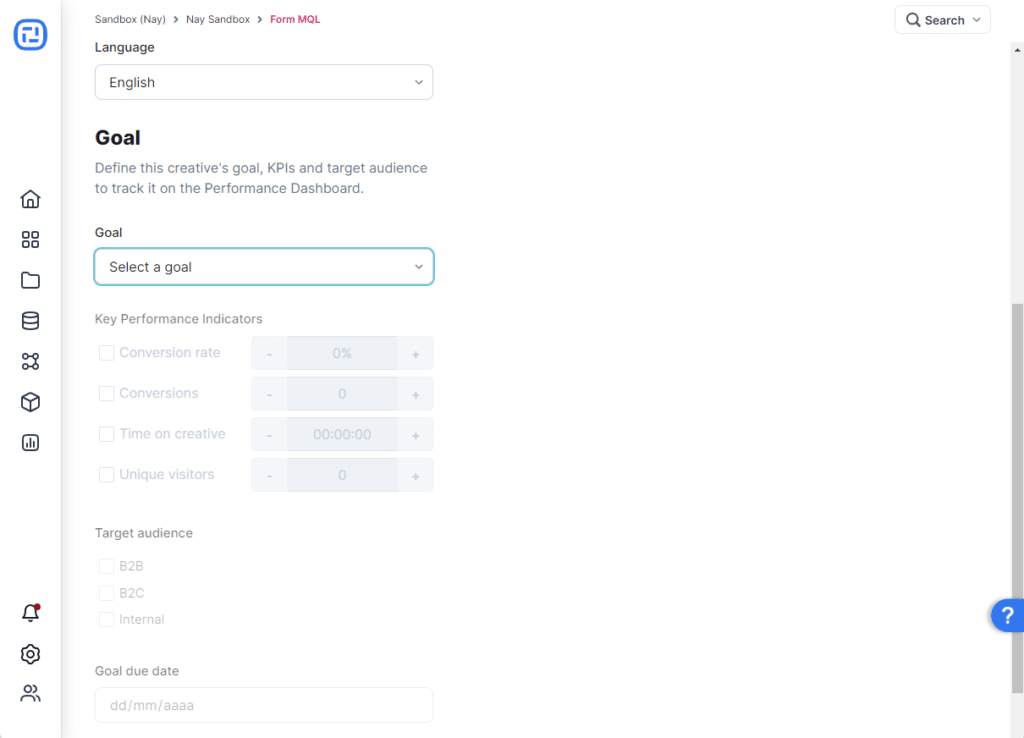
Interactive e-books are an innovative way of presenting content and a great ally for your strategy. They not only enrich the user experience but also offer new opportunities to collect data, personalize content, and, of course, drive conversions.
By including interactive e-books in your content marketing strategy, you are not only following a trend but also positioning your company as an innovative brand that is engaged with the needs and preferences of your audience.Are you ready to take the next step? Discover Ion, Rock Content’s interactive platform, and create e-books that will help you achieve your marketing goals.
Start creating interactive content with Ion and increase your marketing results!
Start creating interactive content with Ion and increase your marketing results!







